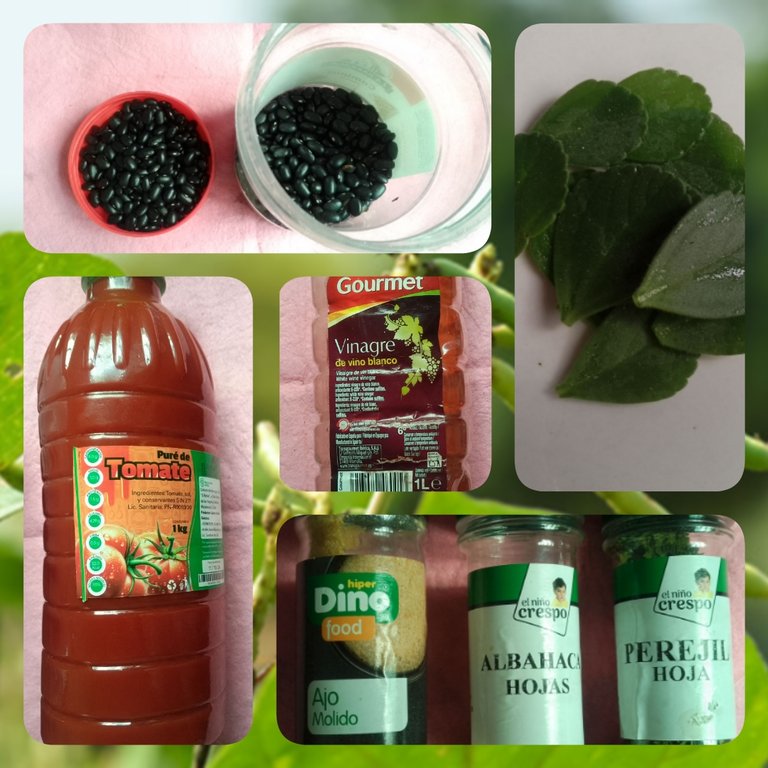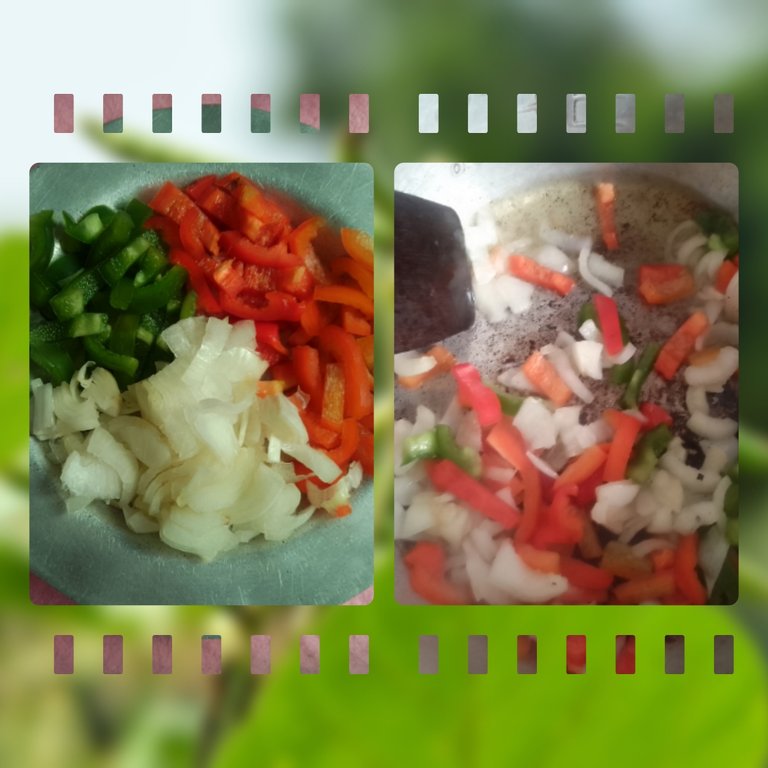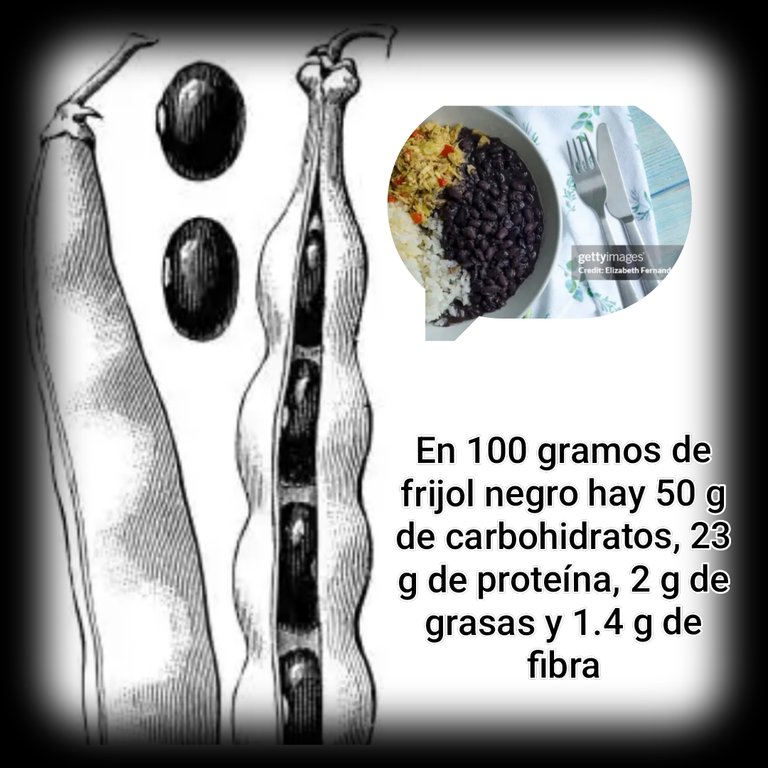Hola, amigos. El potaje de frijoles negros es uno de los platos típicos y más comunes en las mesas cubanas. Sin duda alguna es una de mis preparaciones favoritas y de la mayoría de mis compatriotas. Es por ello que quise compartir con ustedes cómo los preparé hoy.
Hello, friends. Black bean stew is one of the most typical and common dishes on Cuban tables. Without a doubt, it's one of my favorite dishes, and that of most of my fellow Cubans. That's why I wanted to share with you how I prepared it today.

INGREDIENTES: 250 gramos de frijoles negros; 1 1/2 litro de agua; 6 cucharadas de aceite; 1 cebolla pequeña; 1/4 de pimiento rojo pequeño; 1/4 de pimiento naranja pequeño; 1/4 de pimiento verde pequeño; 1 1/2 cucharadita de sal; perejil, orégano, ajo en polvo y albahaca al gusto; 6 cucharadas de puré de tomate; 25 mililitros de vinagre de vino blanco; 4 cucharadas de azúcar
INGREDIENTS: 250 grams of black beans; 1 1/2 liters of water; 6 tablespoons of oil; 1 small onion; 1/4 small red bell pepper; 1/4 small orange bell pepper; 1/4 small green bell pepper; 1 1/2 teaspoons of salt; parsley, oregano, garlic powder, and basil to taste; 6 tablespoons of tomato puree; 25 milliliters of white wine vinegar; 4 tablespoons of sugar.

PREPARACIÓN: Colocar los frijoles en una olla de presión junto con el agua. Apagar 30 minutos después que comience a sonar (coja presión) la olla. Picar los ajíes, la cebolla y las hojitas de orégano en julianas pequeñas. Calentar el aceite y sofreír los ajíes, la cebolla y las hojitas de orégano. Añadir el ajo en polvo, el perejil, la albahaca, el puré de tomate y la sal. Adicionarle al frijol el sofrito y dejar cocinar a fuego medio destapado hasta que cuaje (espese)el potaje. Dos minutos antes de apagar añadir el vinagre y el azúcar.
PREPARATION: Place the beans in a pressure cooker along with the water. Turn off the cooker 30 minutes after the pressure cooker begins to hum. Chop the chilies, onion, and oregano leaves into small julienne strips. Heat the oil and sauté the chilies, onion, and oregano leaves. Add the garlic powder, parsley, basil, tomato puree, and salt. Add the sofrito to the beans and cook uncovered over medium heat until the stew thickens. Two minutes before turning off the heat, add the vinegar and sugar.

Si prepara estos frijoles puede agregarle malanga o calabaza en trozo o rallada, además de aportarle un delicioso sabor contribuyen a que cuajen más. El nivel de espesor va a depender también del gusto del consumidor. A mí no me gustan tan espesos. El comino, el laurel y el vino seco son ingredientes fundamentales de esta preparación pero lamentablemente yo no tenía. Es mejor utilizar ajo natural que en polvo. Muchas personas dicen que es incorrecto añadirle puré de tomate al frijol negro, pero a mí me gusta. Háganlo de las dos maneras y encuentren la forma en la que les gusta a ustedes. La mayoría de los cubanos utilizamos el potaje para mojar el arroz blanco, aunque hay una minoría que le gusta tomárselo como si fuera una sopa. ¡¡Gracias por leer!!
If you're preparing these beans, you can add malanga or squash, either chopped or grated; in addition to adding a delicious flavor, they also help them thicken. The thickness will also depend on the consumer's taste. I don't like them that thick. Cumin, bay leaves, and dry wine are essential ingredients in this preparation, but unfortunately, I didn't have any. It's better to use natural garlic than powdered garlic. Many people say it's wrong to add tomato puree to black beans, but I like it. Do it both ways and find the way you like it. Most Cubans use potaje to dip white rice, although a minority prefers to eat it like soup. Thanks for reading!!




